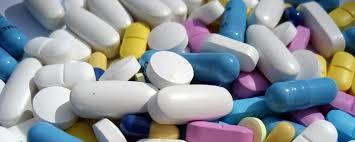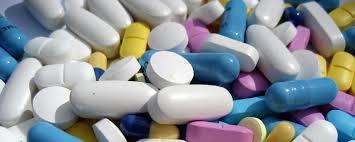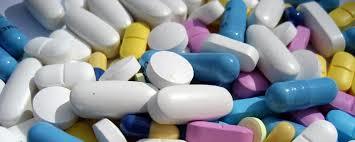
Thyroxine Tablet
73 INR/Box
Product Details:
- Purity 99%
- Formulations Type General Drugs
- Formulations Form Tablets
- Gender/Age Group Adult
- Storage Instructions Dry Place
- Click to view more
X
Thyroxine Tablet Price And Quantity
- 300 Box
- 73 INR/Box
Thyroxine Tablet Product Specifications
- 99%
- General Drugs
- Adult
- Tablets
- Dry Place
Thyroxine Tablet Trade Information
- Cash in Advance (CID) Cash Advance (CA)
- 300 Box Per Month
- 1 Months
- Yes
- Sample costs shipping and taxes has to be paid by the buyer
- Western Europe Middle East South America Asia Central America Eastern Europe North America Australia Africa
- All India
Product Description
Thyroxine sodium is a synthetic thyroid hormone drug that addresses low levels of naturally occurring thyroxine or T4. There are generally three conditions for which people might be prescribed thyroxine sodium. Hypothyroidism or very low levels of T4 could indicate its use. People with the autoimmune disorder Hashimoto's thyroiditis also take this drug. A person born without a functioning thyroid or who has had this gland removed via surgery or radioactive iodine needs replacement of T4, too.Indications:
Replacement or supplemental therapy in patients of any age or state (including pregnancy) withhypothyroidism of any etiology except transient hypothyroidism during the recovery phase of subacute thyroiditis; Specific indication include: primary hypothyroidism resulting from thyroid dysfunction, primary atrophy, or partial or total absence of thyroid gland, or from the effects of surgery, radiation or drugs, with or without the presence of goiter, including subclinical hypothyroidism; secondary (pituitary) hypothyroidism; and tertiary (hypothalamic) hypothyroidism..
A pituitary TSH suppressant in the treatment or prevention of various types of euthyroidgoiters, including thyroid nodules, subacute or chronic lymphocytic thyroiditis (Hashimoto's), multinodular goiter, and in conjunction with surgery and radioactive iodine therapy in the management of thyrotropin-dependent well-differentiated papillary or follicular carcinoma of the thyroid.
Pharmacology:
Mechanism of action:
Thyroxine works by releasing T4 which is regulated by the hypothalamic-pituitary-thyroid axis. Thyrotropin-releasing hormone (TRH) is released from the hypothalamus and triggers secretion of thyrotropin-stimulating hormone (TSH) from the anterior pituitary. The presence of TSH stimulates synthesis and secretion of T4 and L-triiodothyronine (T3) by the thyroid. When serum concentrations of T3 and T4 increase, secretion of TRH and TSH declines. While the exact mechanisms of action for T3 and T4 are not well understood, they appear to work through control of DNA transcription and protein synthesis. Both T3 and T4 have the ability to diffuse into the cell nucleus and bind to thyroid hormone receptor proteins on DNA. This binding results in their ability to regulate a variety of metabolic processes influencing normal growth and development, maturation of the central nervous system, and bone formation. Although both T3 and T4 are active, T3 is the predominate form throughout the body. The majority of circulating T3 (approximately 80%) is derived from T4, through deiodination in peripheral tissues. Thyroxine serves as an alternate source of T4 in patients with impaired endogenous production.
Pharmacodynamics:
The thyroid hormones thyroxine (T4) and triiodothyronine(T3) are crucial for development. They act via stimulation of growth hormone synthesis. In adult thyroid hormones maintain metabolic homeostasis. Circulating levels of thyroid hormones are controlled by feedback inhibition to the hypothalamic-pituitary axis in response to TSH , which is secreted from the anterior pituitary in response to thyrotropin releasing hormone.
Pharmacokinetics:
Absorption:Absorption of orally administered thyroxine from the gastrointestinal tract ranges from 40-80%, with the majority of the drug absorbed from the jejunum and upper ileum. Thyroxine absorption is increased by fasting and decreased in certain malabsorption syndromes, by certain foods, and with age. The bioavailability of the drug is decreased by dietary fiber.
Distribution:Greater than 99% of circulating thyroid hormones are bound to plasma proteins including thyroxine-binding globulin, thyroxine-binding prealbumin, and albumin. Only free hormone is metabolically active.
Metabolism:The primary pathway of thyroid hormone metabolism is through sequential deiodination. The liver is the main site where both T3 and T4 are metabolized, with T4 deiodination occurring at several other sites, including the kidneys. In addition to deiodination, thyroid hormones are also metabolized through conjugation and glucuronidation and excreted directly into the bile and the gut where they undergo enterohepatic recirculation.
Elimination:Half-life elimination is 6-7 days for euthyroid patients; 9-10 days for hypothyroid patients; 3-4 days for hyperthyroid patients. Thyroid hormones are primarily eliminated by the kidneys (approximately 80%), with urinary excretion decreasing with age. The remaining 20% of T4 eliminated in the stool.
Drug Interactions:
Aluminum and magnesium-containing antacids, calcium carbonate, simethicone, or sucralfate:May decrease T4 absorption; separate dose from levothyroxine by at least 4 hours.
Antidiabetic agents (biguanides, meglitinides, sulfonylureas, thiazolidinediones, insulin):Changes in thyroid function may alter requirements of antidiabetic agent. Monitor closely at initiation of therapy, or when dose is changed or discontinued.
Digoxin Digoxin levels may be reduced in hyperthyroidism; therapeutic effect may be reduced. Impact of thyroid replacement should be monitored.
Estrogens May decrease serum free thyroxine concentrations.
Iron Decreases T4 absorption; separate dose from thyroxine by at least 4 hours.
Ketamine May cause marked hypertension and tachycardia; monitor.
Theophylline, caffeine Decreased theophylline clearance in hypothyroid patients; monitor during thyroid replacement.
Side Effects:
Nervousness, excitability, tremor, muscle weakness, cramps, increased sweating, flushing, heatintolerance, headache, insomnia, rapid heart rate, palpitations, chest pain, excessive weight loss, diarrhea and vomiting.
Warnings & Precautions:
Caution should be exercised in patients with history of difficulty in swallowing, heart disease, high blood pressure, bleeding disorder, anemia, sugar, osteoporosis, fertility problems, other thyroid problems, any allergy, who are taking other medications, during pregnancy and breastfeeding. Monitor blood sugar regularly while taking this medication.
Tell us about your requirement

Price:
Quantity
Select Unit
- 50
- 100
- 200
- 250
- 500
- 1000+
Additional detail
Mobile number
Email







